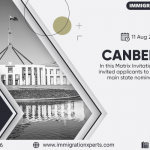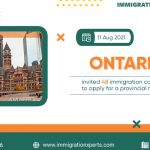John McCallum, Canada’s Minister of Immigration, has stated his aim to considerably increase immigration to Canada in order to fill the country’s labour needs and rise to the demographic challenges faced by an aging population.
McCallum made the comments in Manila, Philippines during a speech to the Canadian chamber of commerce, “Why not substantially increase the number of immigrants coming to Canada? And that is, I think, I hope, what we are about to do . . . the direction in which I would like to go is to increase substantially the number of immigrants”. He further added by saying, “We’re going to reduce some of the barriers in our immigration system . . . we think it can be simplified. We think there are some rules which are no longer necessary.”
Earlier this year, the liberal government of Canada revealed its immigration plan for 2016, which anticipated that the country would invite around 300,000 new permanent residents this year. This marked the highest projected immigration level in decades, and around a seven percent increase on the 2015 plan.
Economic immigration to Canada
Most of the new residents to Canada arrive through one of the many economic immigration programs, which strive to garner skilled new arrivals that have the capability of settling in Canada effectively.
Though the 2016 immigration plan anticipates an increase the overall number of new immigrants to Canada this year, yet the economic categories together saw a decrease in the numbers, with the government first seeking to improve numbers through family unification and humanitarian programs.
However, it is believed that the new plan this year will seek to increase the number of new immigrants to Canada through economic programs, as these programs specify positive labour market outcomes as a foremost aim.
Express Entry: a positive future
The Immigration Minister’s recent comments about increasing immigration numbers with the aim of solving labour shortages may give current and future Express Entry candidates real hope that Canada will accept more immigrants through the system in the near future, with the consequence that CRS cut-off scores may become lower. In addition, the government has pledged to review the system and make changes where appropriate. These changes may occur at any time, and, as a result, candidates in the pool may see their ranking change for the better, placing them in line to receive an ITA at a subsequent draw.
Immigration Minister has plans in other areas too
During a visit to Beijing earlier in his Asian tour, McCallum announced that the government of Canada plans to increase the number of visa offices in China, in order to facilitate the numbers of Chinese visitors, workers, students and prospective immigrants expected to come to Canada in the future.
McCallum’s department is expected to make a number of other changes before the end of 2016, including modifications to the Canadian Citizenship Act and changes to the Temporary Foreign Worker Program.
Growing the country- the right move, the right time
“After spending a few months finding their feet in a few areas, it looks like the department of Immigration, Refugees and Citizenship Canada is making positive moves on a number of fronts,” says Attorney David Cohen.
“Minister McCallum’s ambitious goal to increase overall immigration numbers over the coming years is the right move at the right time. The labour market realities and demographic challenges faced by communities from coast to coast demand a positive government response. If you look at Minister McCallum’s provincial counterparts, many are asking the federal government to be allowed to take in more newcomers. There is not a single provincial government saying they have enough people. Quite the opposite, in fact.
“Overall, the federal government and Canadian provinces alike seem to be on the same page with a clear message to spread around the world — the time is right to come to Canada.”






